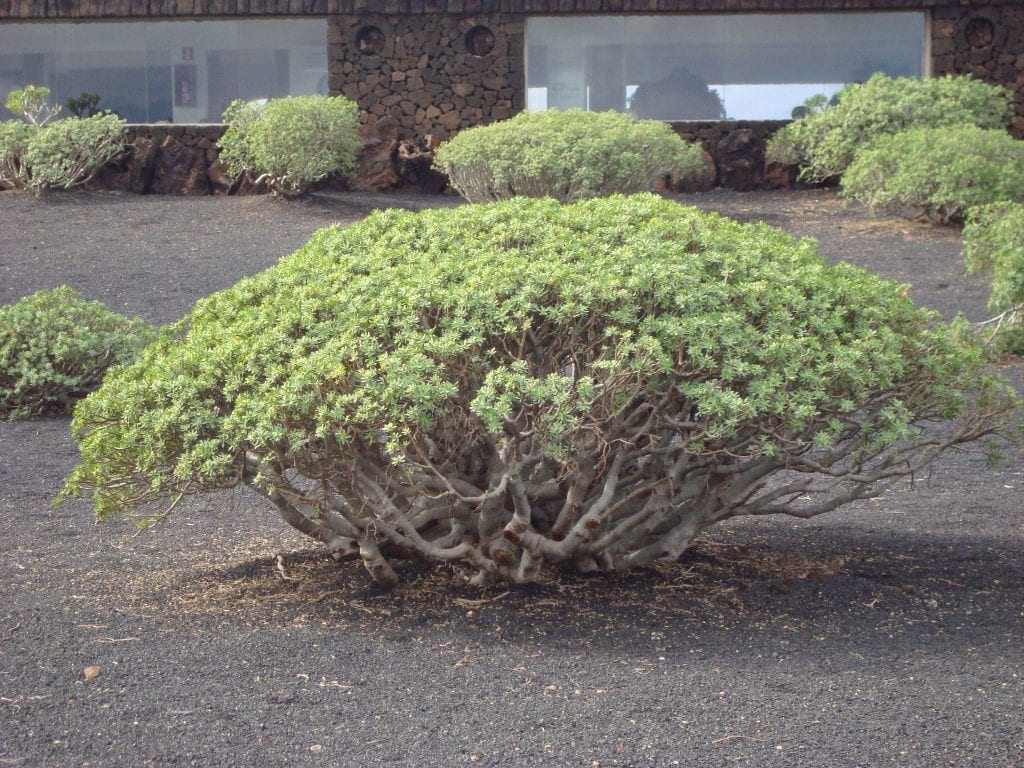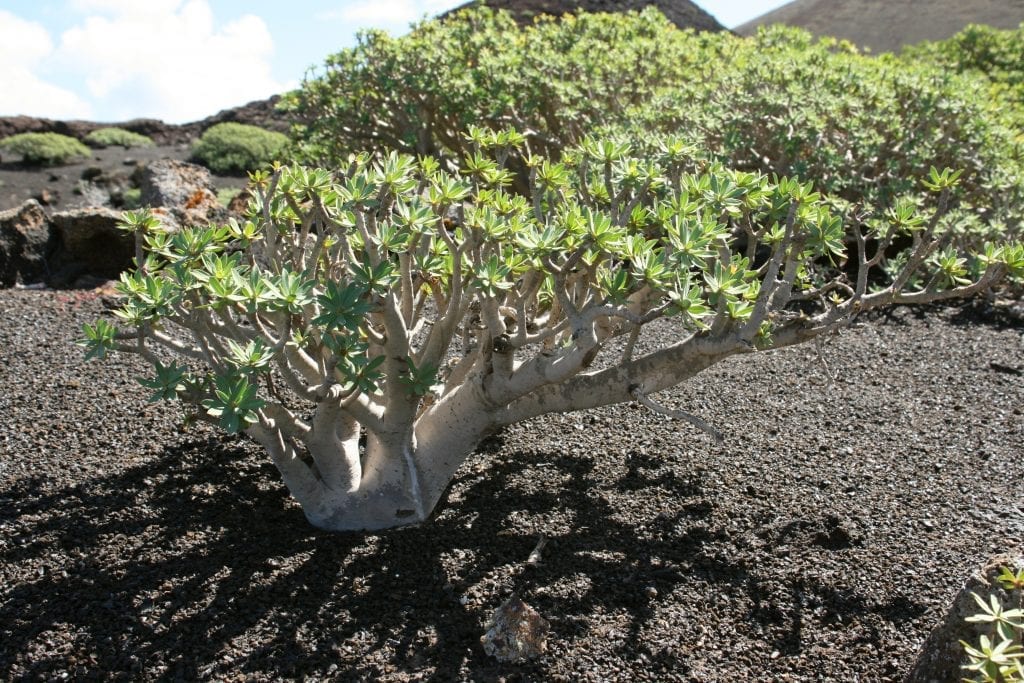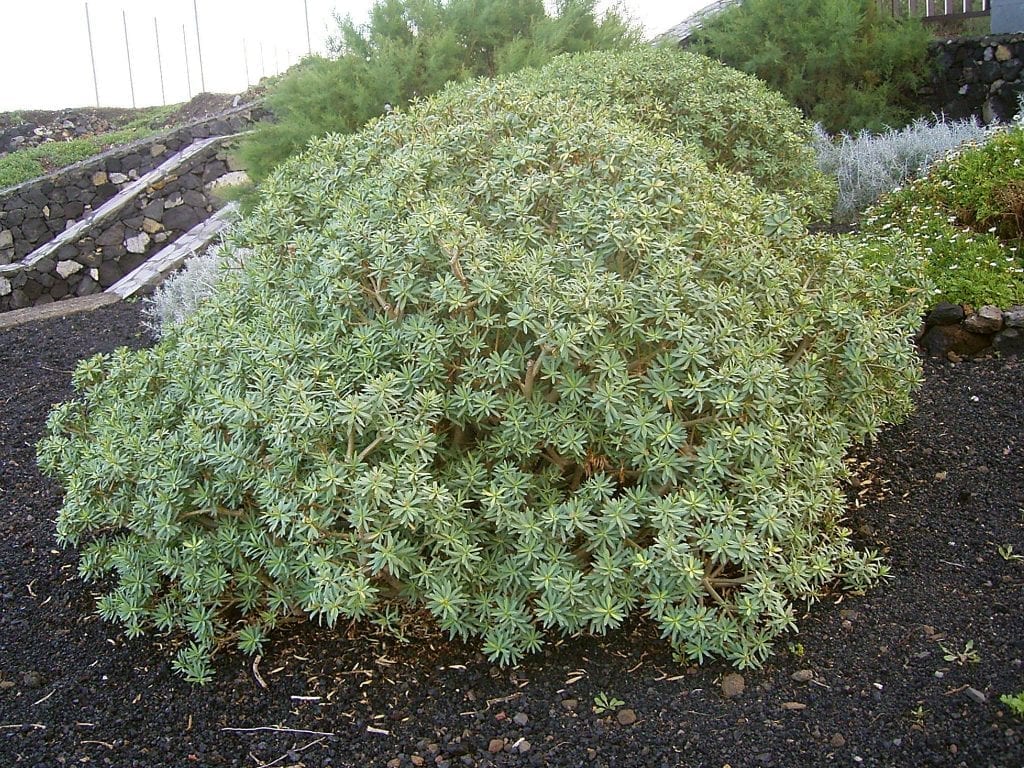
Common names tend to create a lot of confusion, since each region calls plants in its own way, which is great because it is something that is part of the culture and tradition of the locals, but when it comes to studying plant beings you you realize that the same term can refer to several types of species. This is what happens with the tabaiba.
The tabaiba is the name used to call several species of shrubs of the genus Euphorbia. But also, it contains a very interesting secret.
Origin and characteristics

Euphorbia regis-jubae
Euphorbia are plants that you can hate, or you can love. There are some that are herbaceous, others shrubs and others that grow like trees. The ones they call tabaibas they are low-rise shrubs (1-2 meters maximum) that grow in the Canary Islands and on the African continent. Not only do their stems / trunks branch quite a bit, they also only have pale green leaves at their ends.
There are many species that receive that name, but two stand out:
- Euphorbia balsamifera: called sweet tabaiba.
- Euphorbia regis-jubae: called bitter tabaiba.
Plants of this genus are characterized, above all, by the latex that all its parts contain. In the vast majority of Euphorbia it is toxic, but not so in the tabaibas. In fact, the aborigines already used them as medicinal plants, food for goats, and even as a method of fishing.
What are their cares?

Euphorbia balsamifera
Tabaibas are plants that are very easily cared for. You just have to take into account the following:
- Location: outside, in full sun.
- Earth:
- Pot: universal growing substrate mixed with 30% perlite.
- Garden: it is indifferent as long as it has good drainage.
- Irrigation: 2 or 3 times a week in summer, and a little less the rest of the year.
- Subscriber: from early spring to late summer with organic fertilizers, once a month.
- Multiplication: by seeds and cuttings in spring.
- Rusticity: they support mild frosts down to -2ºC. In case of living in a colder area, they can be kept indoors during the winter with a monthly watering.
What did you think of the tabaiba?